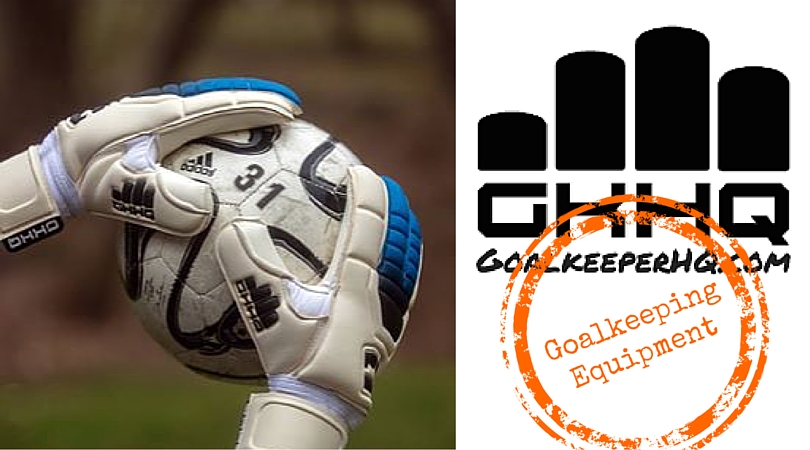Soccer shoes, soccer cleats, soccer boots, cleats, football boots, firm ground shoes – no matter what you call them, they are a game essential.
The different types, models, technologies and materials of soccer shoes can be overwhelming if you don’t know and understand the soccer shoe jargon.
This guide to the soccer shoe will break down the different aspects of soccer shoe buying for parents and players just getting started and act as a handy reminder for the seasoned professionals.
Since one slip can result in a goal conceded, the goalkeeper should regularly maintain boots and ensure they have appropriate footwear for each condition. In simple terms, flats for hard floors ( gym & old turf ), moulded studs / cleats for turf and hard outdoor ground and longer studs for muddy surfaces.
Once you understand the parts of shoe, the most important part of selecting a soccer shoe is understanding the kind of surface for which each shoe is designed.
FIRM GROUND SOCCER SHOES/AKA THE SOCCER CLEAT
Soccer shoes, soccer cleats, soccer boots – whatever the name, most of the time a soccer shoe is a firm ground soccer shoe. Firm ground is the classic soccer shoe with cleats/studs designed to provide traction and stability on most natural grass, outdoor soccer fields. Firm Ground or molded cleats generally have a series of non-removable PU/TPU/rubber studs that are either bladed or conical in shape.
Artificial grass is quickly spreading to fields around the country as it’s more sustainable, not as susceptible to weather, it offers a consistent surfaces and it requires much less maintenance. Some players choose to wear a different pair of cleats on natural and artificial grass, but that can prove to be quite cost prohibitive. Henceforth, as more and more soccer fields are converted into artificial turf and players are expected to be ready to play on both natural and artificial grass, adidas has responded with the hybrid AG/FG outsole.
These cleats are designed for acceleration on firm, natural surfaces and artificial grass with multiple cleat shapes and lengths. You’ll this new outsole design on adidas’ X and ACE.
SOFT GROUND AND PRO SOFT GROUND SOCCER SHOES
Soccer shoes created for soft ground play have longer cleats for added traction on wet, muddy fields. Often, soft ground cleats have metal-tipped and/or detachable studs. The studs on soft ground shoes are also usually varying lengths. Many soft ground boots with their exchangeable and removable studs can be customized for playing conditions and fields.
Pro soft ground soccer cleats are a combo of fixed studs and traditional, detachable soft ground cleats. They are ideal for use on wet and muddy fields requiring maximum traction.
ARTIFICIAL GRASS/HARD GROUND SOCCER SHOE
Artificial grass shoes are frequently used on new artificial turf and sun-baked hard ground. Artificial grass and hard ground soccer shoes usually have a large number of short studs that are evenly distributed across the entire outsole. Artificial grass shoes are pretty similar to firm ground cleats just with a lot more studs that are shorter for better support. The studs on an artificial grass or hard ground soccer shoe are usually rubber and designed to be extremely durable.
An indoor soccer shoe usually has a gum rubber flat outsole. They are created for playing indoor soccer or futsal in a gym or rec facility, but will also work for leisure and street wear. Indoor soccer shoes have a lower profile fit and look like a lightweight sneaker.
Designed for the fast, five-a-side play, futsal shoes are usually extremely lightweight. Futsal shoes have low profile rubber outsoles for traction on flat indoor courts and turf surfaces.
Turf shoes or turf boots usually have an extremely durable, rubber outsole. Artificial turf shoes have small rubber studs or patterns on the outsole to improve traction on hard, natural fields and artificial turf. Turf shoes are also great for soccer training and can be used as a back-up pair of shoes for play on hard surfaces.
Lifestyle is what we call the shoes not used for playing soccer. Created for everyday wear, the lifestyle shoe is also know as a street shoe. The lifestyle footwear you will find on SOCCER.COM is generally designed to suit a soccer player’s style.
Running shoes are essential for every soccer player. To maintain the general fitness level required of a player, an off-the-field training regimen is required. Most running shoes have a durable rubber outsole, provide excellent cushioning and feature a breathable nylon upper.
Often the same thing as a running shoe, training shoes almost always have a durable rubber outsole. Some training shoes will features a soccer shoe upper paired up with a rubber training outsole. Training shoes offer comfort and cushioning for your soccer training routine.
Women’s soccer shoes are designed on a narrower last or foot mold to better fit the female soccer player’s foot. Many female soccer players choose to wear a men’s soccer boot, but soccer shoes created especially for women’s soccer can offer a better fit and women’s specific performance technologies. If choosing to wear a men’s soccer shoe, women should size a size and a half down. For example a women who wears a size 9 women’s shoe would wear a size 7.5 men’s shoe.
